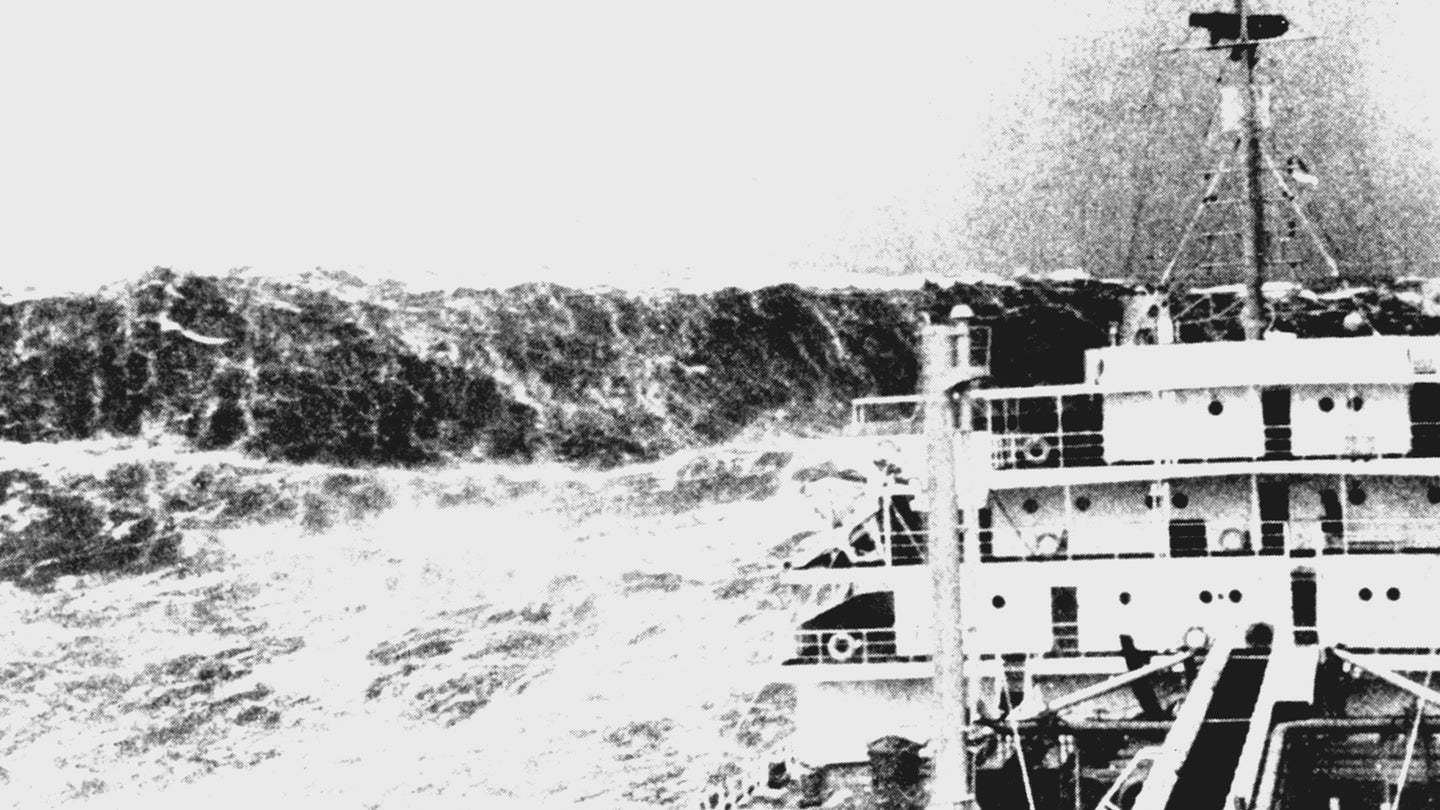An equation co-written with AI reveals monster rogue waves form ‘all the time’
'This is equivalent to around 1 monster wave occurring every day at any random location in the ocean.'

Rogue monster waves, once believed extremely rare, are now statistically confirmed to occur “all the time” thanks to researchers’ new, artificial intelligence-aided analysis. Using a combined hundreds of years’ worth of information gleaned from over 1 billion wave patterns, scientists collaborating between the University of Copenhagen and the University of Victoria have produced an algorithmic equation capable of predicting the “recipe” for extreme rogue waves. In doing so, the team appear to also upend beliefs about oceanic patterns dating back to the 1700’s.
Despite centuries of terrifying, unconfirmed rumors alongside landlubber skepticism, monstrous rogue waves were only scientifically documented for the first time in 1995. But since laser measuring equipment aboard the Norwegian oil platform Draupner captured unimpeachable evidence of an encounter with an 85-foot-high wall of water, researchers have worked to study the oceanic phenomenon’s physics, characteristics, and influences. Over the following decade, oceanographers came to define a rogue wave as being at least twice the height of a formation’s “significant wave height,” or the mean of the largest one-third of a wave pattern. They also began confidently citing “some reasons” behind the phenomena, but knew there was much more to learn.
[Related: New AI-based tsunami warning software could help save lives.]
Nearly two decades after Draupner, however, researchers’ new, AI-assisted approach offers unprecedented analysis through a study published today in Proceedings of the National Academy of Sciences.
“Basically, it is just very bad luck when one of these giant waves hits,” Dion Häfner, a research engineer and the paper’s first author, said in a November 20 announcement. “They are caused by a combination of many factors that, until now, have not been combined into a single risk estimate.”
Using readings obtained from buoys spread across 158 locations near US coasts and overseas territories, the team first amassed information equivalent to 700 years’ worth of sea state information, wave heights, water depths, and bathymetric data. After mapping all the causal variables that influence rogue waves, Häfner and their colleagues used various AI methods to synthesize the data into a model capable of calculating rogue wave formation probabilities. (These included symbolic regression which generates an equation output rather than a single prediction.) Unfortunately, the results are unlikely to ease fears of anyone suffering from thalassophobia.
“Our analysis demonstrates that abnormal waves occur all the time,” Johannes Gemmrich, the study’s second author, said in this week’s announcement. According to Gemmrich, the team registered 100,000 dataset instances fitting the bill for rogue waves.
“This is equivalent to around 1 monster wave occurring every day at any random location in the ocean,” Gemmrich added, while noting they weren’t necessarily all “monster waves of extreme size.” A small comfort, perhaps.
Until the new study, many experts believed the majority of rogue waves formed when two waves combined into a single, massive mountain of water. Based on the new equation, however, it appears the biggest influence is owed to “linear superposition.” First documented in the 1700’s, such situations occur when two wave systems cross paths and reinforce one another, instead of combining. This increases the likelihood of forming massive waves’ high crests and deep troughs. Although understood to exist for hundreds of years, the new dataset offers concrete support for the phenomenon and its effects on wave patterns.
[Related: How Tonga’s volcanic eruption can help predict tsunamis.]
And while it’s probably disconcerting to imagine an eight-story-tall wave occurring somewhere in the world every single day, the new algorithmic equation can at least help you stay well away from locations where rogue waves are most likely to occur at any given time. This won’t often come in handy for the average person, but for the estimated 50,000 cargo ships daily sailing across the world, integrating the equation into their forecasting tools could save lives.
Knowing this, Häfner’s team has already made their algorithm, research, and amassed data available as open source information, so that weather services and public agencies can start identifying—and avoiding—any rogue wave-prone areas.
